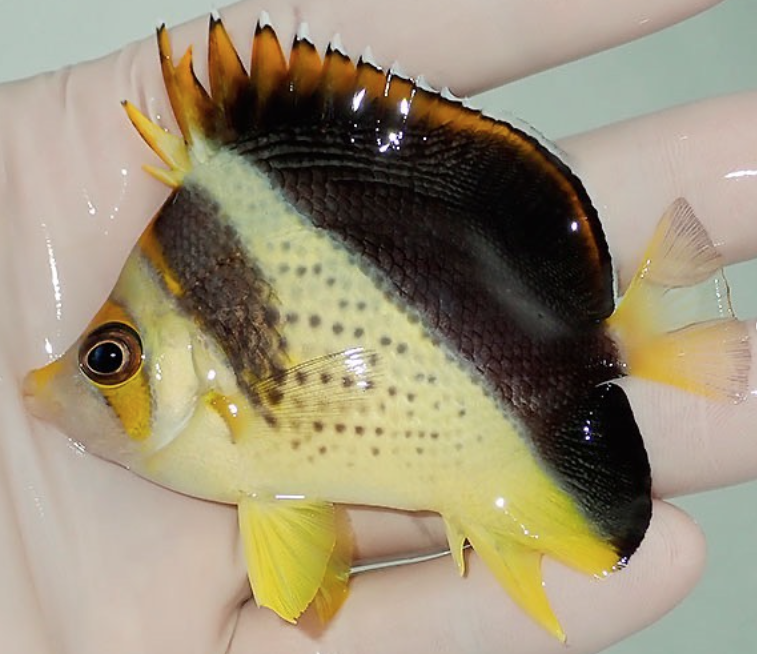Japanese aquatic store Aqua Gift has received another yellow Burgess’ Butterflyfish, Chaetodon burgessi. Hailing from the subgenus Roaops, burgessi and its five closely related congeners inhabit deep drop-offs in the Indo-Pacific, are highly sought-after aquarium fish, and this particular yellow specimen will get the pulses racing for many a saltwater fish collector. What species actually is it though?
Most C.burgessi are readily identified by the three angular black bands. If they have a yellow band through the eye it could be C.tinkeri, declivis or flavocoronatus, while the only species with a significantly yellow underside is C.mitratus. The pictured fish however has the yellow eye stripe and snout of flavocoronatus, a mix of color and pattern of C.burgessi and C.flavocoronatus, but the underside of C.mitratus. Is it a yellow C.burgessi, a hybrid, or even a new species? Keen to try and put our fingers on what exactly this fish is we did the only logical thing. We asked Lemon…

“It has hybrid DNA in it probably, but this group is messy,” said Ichthyologist Yi-Kai Tea over Messenger. “For starters, I’d look at barcode sequences to see if it differs from any of the known species, then I’d check morphology to see if they differ. But this group is known to hybridize a lot, and they form many intermediate hybrids, which complicates things. For those reasons, it’s unlikely it’s a new species.”
We asked if hybrids could be fertile and then further cross-breed, making visual ID even more difficult.
“Yes, the Burgess’ from that region are naturally a bit yellower though. The eye stripe is variable in some Burgess’ populations and in some areas it’s completely yellow. You can get yellow Burgess’ with black eyes and white Burgess’ with yellow eyes. It’s a huge complex of species that hybridizes a lot. There are C. declivis that are black for example. A lot of study needs to be done to figure out where the species’ limits lie and what’s going on.”
So at this stage, we think the pictured specimen may be a hybrid, and have learned that color and pattern alone are not easy species indicators due to natural variation and widespread hybridization. What we do know though is that this eye-catching, intriguing Yellow “C.burgessi,” is exquisitely beautiful and a bucket list specimen for sure.



